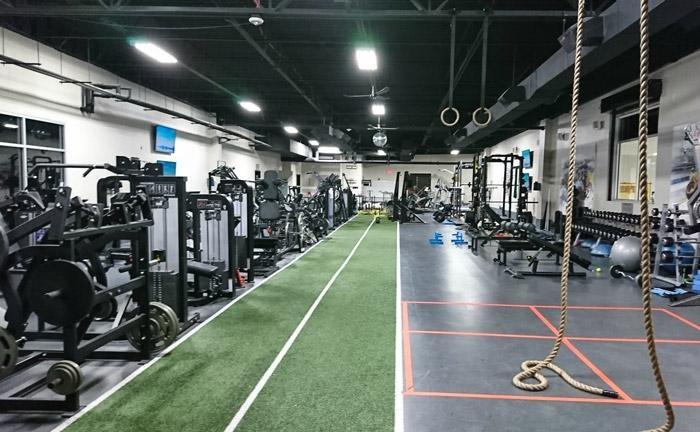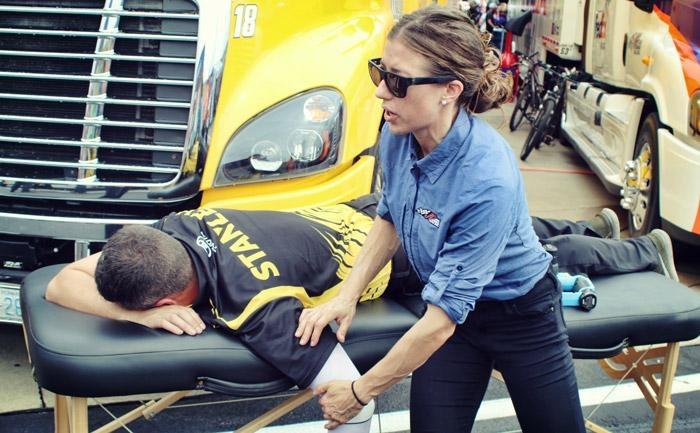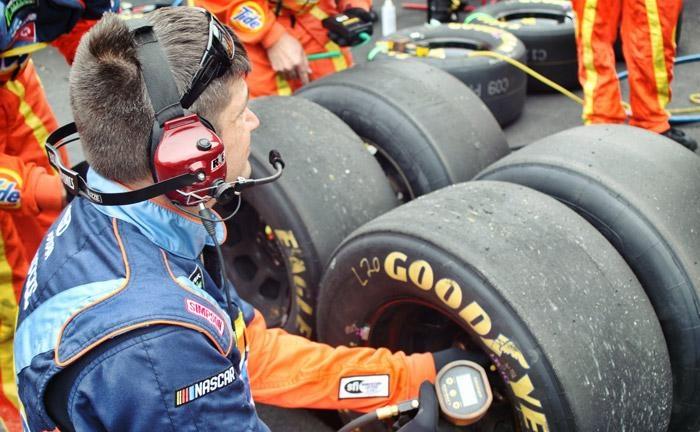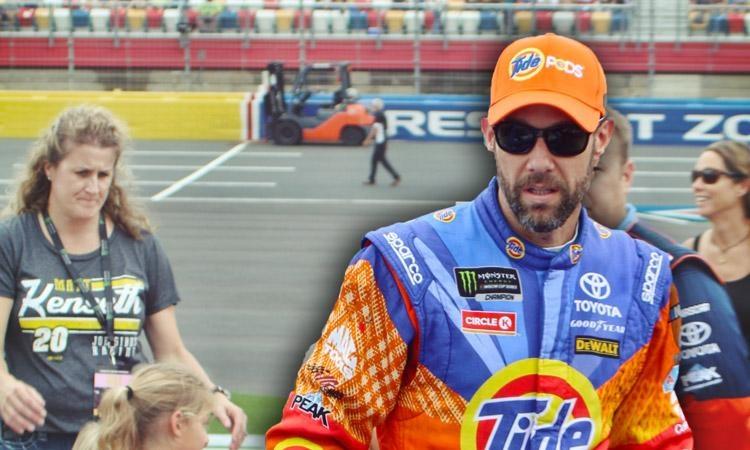To the uninitiated race fan, it might seem like a top NASCAR driver like Matt Kenseth is simply doing what we all do every day - just a whole lot faster. While it's true that he's driving a car, there's a lot of training and physical fitness involved that makes him and his crew able to do the amazing feats you see them do on race day. For instance, in some turns a driver will experience 3 G's of force - making a 160 pound driver weigh 480 pounds in a turn. On top of this, the in-car temperatures can reach 120 degrees and yet they still need to be alert and able to response with lightning quick reflexes as they race around the track at up to 200 mph.
Our visit to learn more about how Matt is able to stay fit began with a tour hosted by Tide Pods during the Bank of America 200 with a tour of Joe Gibbs Racing.
Overlooking the shop floor at stands 4,000 square feet gym and physical therapy department at Joe Gibbs Racing. Filled with top-of-the-line machines, climbing ropes, free weights, and even a disco ball to help set the mood, this fitness center was designed with one purpose, to win races.
Senior Athletic Advisor Michael Lepp explained, that while the drivers may sometimes utilize the space, and any Joe Gibbs Racing employee can use it, the main focus is keeping the pit-crews in shape and injury free.

Training is not limited to just the gym, behind the shop is a full-size football field where training exercises are held. From traditional athletic drills to games of football, being active is all part of the job for any member of the pit-crew. Outside there is also a pit-stop practice area where the team trains over and over again, each working on their specific task, but doing so in unison.
Preventing and treating injuries for the entire Joe Gibbs Racing family is Dr. Jena Gates, who is a specialist in exercise-based recuperation and physical therapy. From studying the types of movements’ team members need to make and the common injuries that occur, Dr. Gates has developed routines and treatments to limit injuries and recovery times. She travels with the teams to all 36 NASCAR races around the country making sure the teams are in top form, hydrated, and eating right.

Dr. Gates also coordinates with the engineers and mechanics when a driver has an injury that requires special modifications be made to the car. When driver Daniel Suarez, has a wrist injury Jena worked with the shop to modify the shifter, or when another driver had an ankle injury the clutch and brake pedal was slightly modified to require less pressure. “The purpose of the Physical Therapy & Performance Specialty department is to make sure that all of our team members are able to perform at their best, every race,” said Dr. Gates.
The state of the art facility is also filled with trophies and banners showcasing the many victories that Joe Gibbs Racing has had. My visit was at the invitation of team sponsor, Tide Pods, who was the main sponsor of Matt Kenseth’s number 20 car for the Bank of America 500. The next day I would get to see the Tide Pods Racing team in action, directly from the pit-box.
Race day, walking through the pits under threat of rain, the entire team is in full swing, the trackside pit crew is setting up their pit-box, two members are gluing lug nuts onto the spare wheels, while Dr. Gates is working on a pit-crew member’s arm on a massage table by the team’s big rig. As the start of the race draws near the team suits up in their matching Tide orange race suits and head out to pit-row.

Once the race is underway you can really see how their training and physical fitness come into play with six members of the pit-crew jumping over the wall some carrying up to 100lbs, they change four tires and refuel the car in about 10 seconds. Once the initial flurry of activity is over and Matt is headed back out to the track the crew analyzes the tires that came off the car, passing that data onto the crew chief, then they start prepping for the next pit stop.
The NASCAR season is the longest in professional sports, starting in mid-February and ending in mid-November, even in the short two-month off-season the pit-crews train a few days a week. While the drivers may be the public face of the team, the pit-crew, staff, mechanics, engineers, and sponsors are all equally important parts of a NASCAR team.
